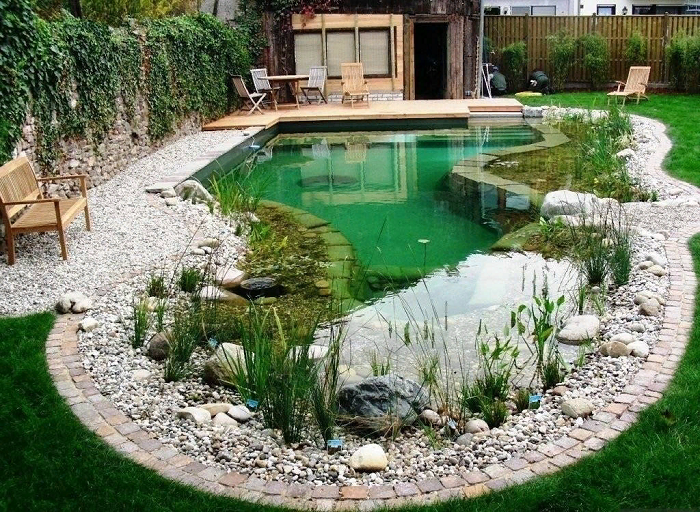
10 Nov Pond Care
Let us first consider the question of balance or biological equilibrium. Your pond is an open ecosystem consisting of water, higher aquatic plants, soil, living organisms, their waste products, organic residues. If you have ever been engaged in aquarium growing, then, for sure, remember that after planting plants in an aquarium, you need to wait a while, during which the water in it will first become cloudy, and after a few days it will become clean and transparent again. This will be a sign of the establishment of biological balance. The fish planted in the aquarium will not disturb it. In the pond as well as in the aquarium. However, maintaining this balance requires the implementation of mandatory measures to create the necessary conditions for the development of higher plants and fish, but preventing the development of protozoan algae, just spoiling the water.
First, it is necessary to remove dead plants and leaves from the surface from the water, in order to avoid the development of protozoan algae, water blooms and the formation of toxic substances in it.
Secondly, the soil in pots should not contain peat, compost, manure and soluble fertilizers.
Thirdly, the water in the pond must be shaded. This task can be accomplished by planting water lilies so that their leaves cover about half the surface. Water lilies can be supplemented with floating plants. Oxygenerators produce oxygen that fish need and absorb unnecessary carbon dioxide.
Fourth, it should be remembered that in small ponds the water will not be completely clean and may need to be filtered..
Consider the main seasonal work in the pond.
Summer. In addition to admiring, it is necessary to monitor the water level and top it up regularly. If the fish grab air with their mouths, then this means a lack of oxygen. You can fix the problem by installing a fountain or watering the pond with sprayed water from a hose. Overgrown plants need to be thinned out, and duckweed removed. Remove faded flowers immediately, without waiting for the formation of fruits and seeds. Oh, and don’t forget to feed the fish.
Autumn. Busiest period. A general cleaning is carried out in the reservoir: coastal plants are cut to the water level, sediment and debris accumulated at the bottom are removed, the pond is protected from falling leaves with a net, non-frost-resistant plants are transplanted into jars, and in the absence of a heater or a shallow small pond, fish are also transplanted. Preferably in an aquarium.
Winter. If its inhabitants remained in the reservoir, then during the period of severe frosts it should be covered for a short time with burlap or boards. Don’t forget about the hole, which can be made with a hot pot, without the use of percussion instruments.
Spring. Basically, planting, transplanting and planting plants. In other words, the landscape of the reservoir is updated and improved. Don’t mind feeding the fish. If the fish overwintered in the aquarium, then they return to the pond.



No Comments